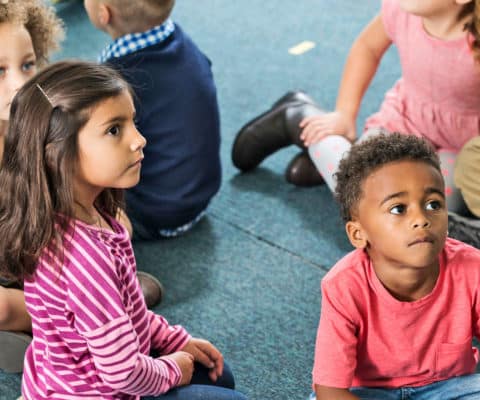View more articles about
‘Formal’ preschool may sharpen kids’ focus
May 10th, 2017
Children who transition earlier to a formal school environment learn to be more focused and are less impulsive than children at play-based preschools, a new study suggests.
“These results demonstrate for the first time how environmental context shapes the development of brain mechanisms in five-year-olds transitioning into school,” says Silvia Bunge, a professor of psychology and neuroscience at the University of California, Berkeley, and coauthor of the paper in Psychological Science.
Researchers hypothesized that a controlled educational setting in which young children must learn to sit still, follow directions, and avoid distractions would boost certain cognitive skills, such as staying on task. The experiment, conducted in Germany where preschool is referred to as “kindergarten,” proved the theory.
“Our results indicate that the structured learning environment of school has a positive effect on the development of behavioral control,” says lead author Garvin Brod, a researcher at the German Institute for International Educational Research.
For the study, researchers used computerized tests and brain imaging to track the cognitive performance of 62 5-year-old children.
Expel preschoolers or teach them social skills?
A comparison of the results of tests conducted at the beginning and end of a school and preschool year, show that children who had gone to school showed greater improvement than their preschool peers at maintaining focus and following rules.
Moreover, functional magnetic resonance imaging (fMRI) of their brains during an attention control task showed the children who had started school had a more active right parietal cortex, which supports attentiveness, among other cognitive skills.
While the findings reveal new information in the ongoing debate over the developmentally appropriate age to start school, the researchers are not necessarily advocating for early school start ages.
“Those results should not be taken to mean that the elementary school setting is necessarily better for young children’s development than play-based early schooling,” Bunge says, citing other research that shows children do well in hands-on, interactive learning environments and the fact that there is enormous developmental variation across children of the same age.
The study is part of the HippoKid project led by Yee Lee Shing at the Max Planck Institute for Human Development.
Source: UC Berkeley



